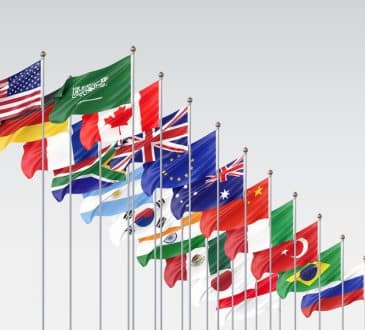3 Reasons Leaders Should Embrace Cowardice

Can you imagine if your cowardice was not a weakness, but a strength? A guiding light showing you where your path is?
The word coward is incredibly emotive. No one, particular men steeped in toxic masculinity, wants to be called a coward. We have been programmed from birth that to be a coward is shameful, to desert your military post should be punishable by death. To give in to your fear makes you weak. To be called “yella” brings with it humiliation.
Our cowardice shows up when we are about to step out of our comfort zone, perhaps to do something new. In terms of the hero’s journey, it means we have heard the call to adventure and we are on the verge of setting out on a quest.
Our cowardice should be embraced as a potential guide that we are about to do something awesome.
Cowardice is our fear telling a story
We go in to storytelling mode when we are trying to predict the outcome of a new challenge. Sadly this is often a negative story with an unhappy ending. The business venture fails, our potential date says no, we lose the game and it is our entire fault, we get mocked, and people dislike us.
That is all a narrative we are telling ourselves, and much of it is based on mind reading. We are assuming what other people are thinking. We love a story, and stories are great at holding our attention. We seek the dramatic arc of the hero who overcomes obstacles to win the day. Whilst we find it easy to identify with the hero on the screen, it is much harder to recognise the hero in ourselves. To have self-belief and hold imposter syndrome at bay.
If fear is telling us a story, if fear is trying to hold us back, if fear is highlighting our weaknesses, then we have identified the next step we should make. The story is a parable, showing us that what we most desire is outside of our comfort zone.
Perfectionism is cowardice in disguise
The fear of being judged, both positively and negatively, can be paralyzing. We do not want to share our failures or our weaknesses in the belief that we might look weak, or that they will be used against us. This means we hide behind walls or a mask, which prevent a true human connection.
Vulnerability expert Brené Brown says: Perfectionism is the belief that if we do things perfectly and look perfect, we can minimize or avoid the pain of blame, judgment, and shame. Perfectionism is a twenty-ton shield that we lug around, thinking it will protect us, when in fact it’s the thing that’s really preventing us from being seen.
This fear causes a lack of communication, a lack of new ideas being discussed or implemented, a lack of our USP (us) from being seen and attracting our ideal client or tribe.
Acknowledging cowardice is vulnerability
Sharing our flaws and weaknesses does not mean telling people that we will fail. It does not mean that we cannot achieve, or that people should lose faith in us. It means that we are self-aware and have no problem being vulnerable because we understand that doing so is an effective way to recruit allies, to inspire, and to shore up our weak points.
Vulnerability builds trust, and our honesty gives us strength.
“Great leaders know how to drop the masks and just be the best version of their unique selves. They know that showing weakness actually is the strongest sign of courage and confidence.” — Kevin Kruse.
To say that we are scared, anxious, depressed, overwhelmed, or stressed, is a way to address the emotions that feed the fear that will cause the cowardice. By trying to avoid being vulnerable we can end up being more so. We can lose allies due to misunderstandings, we can develop mental health issues by pretending everything is fine, we can seem emotionally closed off, or arrogant.
New York Times bestselling author Roy Vaden shared the following story. There is a place in Colorado, USA, where cows and buffalo live in close proximity. When a storm comes it usually approaches from the West, and the cows try to escape, but end up running with the storm, and spending more time in it.
The Buffalo wait until it is closer, and then charge into it. They face the challenge head on. This means they pass through it faster, minimising the pain. They probably felt the same fear as the cows, but the Buffalo realised there is a gap between stimulus and response. They felt the fear of the obstacle ahead, faced the COWardice, and acted anyway.
It is okay to be afraid, to struggle, to be uncertain. The fears will rise up over and over again, and we might be on the verge of giving in to them. We might even be swimming in cowardice as we run through all the reasons we should not take action, or avoid a new challenge. They might even be valid.
But we have to have the conversation with cowardice. To pull it out into the open and dissect it. How deep are its roots? Are those fears valid? What are we really afraid of? We should pull the cowardice close, and whisper in its ear that we have listened and understood, and in this instance it is wrong, and we will no longer be requiring its services.
Have you read?
1. Most Affordable Business Schools In Asia For MBA Programs, 2019.
2. Why companies like Google and Facebook are cool and others are not?.
3. Best Snorkeling Destinations In South America, 2019.
4. Kids should travel a lot in their growing years.
5. Most Popular Shopping Malls In America, 2019.
Bring the best of the CEOWORLD magazine's global journalism to audiences in the United States and around the world. - Add CEOWORLD magazine to your Google News feed.
Follow CEOWORLD magazine headlines on: Google News, LinkedIn, Twitter, and Facebook.
Copyright 2025 The CEOWORLD magazine. All rights reserved. This material (and any extract from it) must not be copied, redistributed or placed on any website, without CEOWORLD magazine' prior written consent. For media queries, please contact: info@ceoworld.biz








